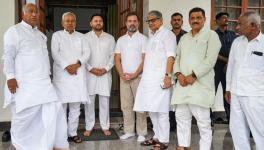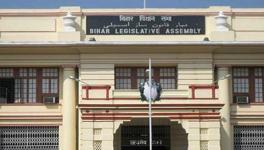Treating Unequals as Equals: Can SCs/STs be Sub-Categorised?

Recently the Supreme Court of India ruled to allow quota within quota through subclassification of castes within the reserved categories. It also sought the application of the creamy layer test to Scheduled Castes and Scheduled Tribes. This was in contradiction to an earlier bench’s ruling. V Venkatesan, a senior legal journalist, examines the background of the debate and the issues with the judgment.
———-
ON August 27, the Supreme Court’s five-judge Constitution bench presided by Justice Arun Mishra, disagreed with the decision of another five-judge bench in E.V.Chinnaiah v State of Andhra Pradesh, delivered in 2005, and referred it for reconsideration by a bench comprising of seven or more judges.
The point of disagreement arose as in E.V. Chinnaiah, the court had held that Scheduled Castes (SCs) are a homogeneous class, and therefore, sub-categorisation is not constitutionally permissible.
On the other hand, the bench headed by Justice Arun Mishra in State of Punjab v Davinder Singh, held that merely giving preference in quota to specific castes in the conglomeration of castes in the state’s SCs does not tinker with the Presidential list of SCs under Article 341. The bench claimed that those castes which have come up and had been adequately represented, have usurped the benefits of reservation for SCs.
The court said that according to various reports the disparity within SCs is writ large. The entire basket of fruits cannot be given to the mighty at the cost of others under the guise of forming a homogeneous class, the bench reasoned. The state has to sub-classify and adopt distributive justice so that state largesse does not concentrate in few hands, and equal justice to all is provided.
Those who demand sub-categorisation are in fact against applying the creamy layer test to the SCs and STs.
The story so far
In 1996, the Andhra Pradesh Government had appointed the Justice P.Ramachandra Raju commission to inquire into whether a disproportionately large number of benefits have gone to a particular sub-caste of Scheduled Castes. If so, the commission was to indicate all such steps as are necessary and required to be taken to ensure that the above benefits are equally distributed amongst the various sub-castes of SCs.
The Raju Commission recommended steps to distribute the benefits equitably amongst the SCs, by dividing the 15 percent reservation proportionately according to the population amongst them. Accordingly, the state government categorised them broadly into Relli, Madiga, Mala, and Adi Andhra group of communities. The SC quota was apportioned as 1, 7, 6, and 1 percent among the four, categorised as A,B,C, and D respectively.
The National Commission for SCs and STs (NCST), in 1998, rejected categorisation as an ineffective way to remove the disparities among the 59 castes, as there are wide-ranging disparities regarding literacy and employment levels within each group too.
In 2000, a full bench of the Andhra Pradesh High Court in Mallela Venkata Rao and Others v State of Andhra Pradesh held that the castes within the SCs are not equal to each other. It is for the state to distribute the reservation according to the needs and requirements of the upliftment of the particular caste in the catalogue of castes. The issue is not legal, but political; to protect the society from further disaster, it is for the political representatives to swing into action, reasoned Chief Justice M.S.Liberhan.
“To treat the conglomeration of castes as a caste would render the totally deprived caste under the tramples of feet of people who are less deprived especially the ones who are exposed to more professional and intellectual opportunities. It would encourage grabbing of the state largesse by some while depriving the others of the opportunity,” the high court opined.
A dissent by Justice Bilal Nazki, held that the sub-categorisation was based on castes, which is prohibited by Articles 15 and 16 of the Constitution, as any classification based on caste alone is ultra vires.
From High Court to Supreme Court
The matter traveled to the Supreme Court which reversed the High Court’s decision in 2004 in E.V. Chinnaiah v State of Andhra Pradesh. It held that the Constitution itself has kept the SC/ST list out of interference by the state governments.
While the bench claims that it would not be permissible to adopt different criteria for SCs, STs, and SEBCs if sub-classification is permissible for SEBCs alone, the bench does not answer the question why not.
If the object of reservation is to take affirmative action in favour of a class which is socially, educationally and economically backward, such a class cannot be subdivided so as to give more preference to a minuscule proportion of the SCs.
The very idea of placing different castes or tribes as a conglomeration suggests that they are not to be subdivided or sub-classified further, the constitution bench reasoned. If benefits of reservation are not percolating to them equitably, then measures should be taken to see that they are given such adequate or additional training so as to enable them to compete with others. In the process of rationalising the reservation, the constitutional mandate of Articles 14 to 16 cannot be violated, the bench observed.
Justice S.B.Sinha held that only exclusion of castes from within the list of SCs is contemplated by law made by Parliament, but not sub-classification of SCs on the basis of caste. Justice H.K.Sema opined that further classification or regrouping of the homogeneous groups by state legislature would tinker with the Presidential notification issued under Article 341, which is constitutionally impermissible. Calling it discrimination in reverse, he said it would attract the wrath of Article 14. It is a trite law that justice must be equitable and that justice to one group at the cost of injustice to other groups is another way of perpetuating injustice, he held.
E V Chinnaiah and The Punjab case
In Davinder Singh v State of Punjab, the petitioner belonged to a Scheduled Caste. His appointment as a lecturer was terminated, after the probation period, because it was in excess of the prescribed quota in the individual sub-caste in the SCs. The High Court declared Section 4(5) of the Punjab SC and BC Reservation in Service Act, 2006 as unconstitutional. The provision required 50 percent vacancies to be filled up by the Balmiki caste and 50 percent from the Mazhbi caste by way of first preference.
Although the Supreme Court’s decision to refer the matter to a larger bench is the correct one to make under the circumstances, the grounds cited by the bench are hardly convincing.
The High Court order directed the state government to take a decision on the claim of the petitioner within one month of the order. Justice Adarsh Kumar Goel pointed out that the state was not able to distinguish the applicability of the Supreme Court’s judgment in E.V.Chinnaiah to the present case.
In an appeal before the Supreme Court, the State of Punjab claimed that E.V.Chinnaiah did not apply to this case, and sought reconsideration of E.V.Chinnaiah by a seven-judge bench. This has now been granted by the Supreme Court’s five-judge bench on August 27, by making a reference.
The Centre did not take a clear stand on the issue before the Supreme Court. Following the judgment in E.V.Chinnaiah, the Andhra Pradesh legislative assembly adopted a resolution unanimously on December 10, 2004, recommending to the Centre to take up the issue in Parliament. The Centre then set up a Commission headed by a retired Judge of the Delhi High Court, Usha Mehra, to examine the issue in 2006.
The Usha Mehra Commission, in its 2008 report, found that the major share of the reservation for SCs in Andhra Pradesh was concentrated in the hands of a few castes, namely, Mala, Adi Dravida, and Adi Andhra. The Commission recommended amending the Constitution by inserting Clause (3) in Article 341 to provide for sub-categorisation and de-sub-categorisation of SCs.
According to the Centre, 14 states did not favour the amendment, while seven states favoured it. The seven states are Andhra Pradesh, Chhattisgarh, Haryana, Jharkhand, Karnataka, Telangana, and Punjab. As the response is still awaited from five states and two union territories, namely, Bihar, Maharashtra, Rajasthan, Tamil Nadu and Uttar Pradesh, and Jammu and Kashmir, and Puducherry that have substantial populations of scheduled castes, the Centre has not found it appropriate to go ahead with the amendment now.
“The ground realities of the states and union territories with regard to their social, educational, and economic development differ from each other. Therefore, what is true in respect of the State of Andhra Pradesh cannot be true in respect of other States. Under the aforementioned circumstances, Union of India has not yet been able to take a view in the matter,” the Centre told the Supreme Court.
Some of the bench’s observations seem absolutely unnecessary and irrelevant to the question of sub-categorisation of SCs.
Issues in the August 27 judgment
Although the Supreme Court’s decision to refer the matter to a larger bench is the correct one to make under the circumstances, the grounds cited by the bench are hardly convincing. First, it conflated the creamy layer issue with sub-categorisation, as if both are similar. Those who demand sub-categorisation are in fact against applying the creamy layer test to the SCs and STs.
Therefore, to suggest, as the Arun Mishra bench does, that E.V.Chinnaiah is inconsistent with the Supreme Court’s judgments in M.Nagaraj (2006) and Jarnail Singh (2018) – also decided by five-Judge Constitution benches – because the latter decisions supported the exclusion of creamy layer beneficiaries from the SCs and STs, is erroneous.
Secondly, the bench suggests that the insertion of Article 342A through the 102nd Constitutional Amendment Act in 2018 necessitates review of E.V.Chinnaiah by a larger bench. Article 342A refers to the President’s power to specify socially and educationally backward classes (SEBCs)in a state or union territory, and Parliament’s power to include or exclude from the Central List of SEBCs. While the bench claims that it would not be permissible to adopt different criteria for SCs, STs, and SEBCs if sub-classification is permissible for SEBCs alone, the bench does not answer the question why not.
Some of the bench’s observations seem absolutely unnecessary and irrelevant to the question of sub-categorisation of SCs. Reservation was not contemplated for all the time by the framers of the Constitution, it says. So what does it imply in this case?
Then, it claims that reservation creates inequalities within the reserved castes itself. Again, a wrong hypothesis. Sub-classification is urged not because reservation has created inequalities, but on the ground that absence of sub-categorisation has led to the treatment of unequals as equals.
(The author is a senior journalist based in Delhi. Views expressed are personal.)
This article was first published in The Leaflet.
Get the latest reports & analysis with people's perspective on Protests, movements & deep analytical videos, discussions of the current affairs in your Telegram app. Subscribe to NewsClick's Telegram channel & get Real-Time updates on stories, as they get published on our website.
























